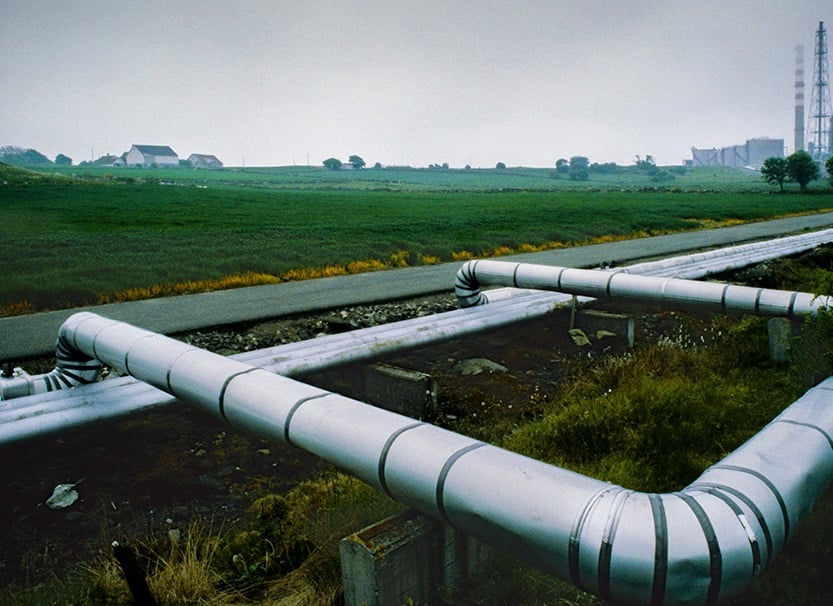
Agencies Collectively Move to Overhaul Environmental Review Regulations

On July 3, 2025, numerous federal agencies initiated an effort to revise the manner in which they comply with the National Environmental Policy Act (NEPA). NEPA, a cornerstone of environmental governance and project development in the U.S., has historically been implemented through regulations from the Council on Environmental Quality (CEQ). The DC Circuit questioned the legality of those regulations, as well as CEQ’s authority to implement them. And at the direction of President Trump’s February 25, 2025 Executive Order 14154 — “Unleashing American Energy” — CEQ rescinded its NEPA implementing regulations. In place, CEQ provided guidance for agencies that instructed them to update their NEPA procedures by February 2026 in a manner consistent with recent statutory amendments that prioritizes “efficiency and certainty over any other policy objectives.” Today, we are getting our first glimpse into what that process will look like.
Individual actions by agencies required. The loss of CEQ’s centralized regulatory guidepost necessitated action by the federal agencies to develop or revise their own rules to ensure compliance with the statute. This decentralization could lead to inconsistencies across agencies, necessitating conscious navigation of the new regulatory landscape — the agencies’ collective efforts are a positive sign that the administration is working to avoid such an outcome.
Follows SCOTUS direction. Overall, the administration’s deregulatory approach follows the Supreme Court’s declaration that a course correction is needed under NEPA. The agency rulemaking efforts indicate a shift toward limited environmental reviews and expedited project approvals, particularly in the energy and infrastructure sectors. The agencies cited the Supreme Court’s decision in Seven County Infrastructure Coalition v. Eagle County, Colorado to support its streamlined efforts in the name of “efficiency” consistent with the statute’s purely “procedural” purpose.
Rescission + Revision. Most agencies are rescinding existing references to CEQ regulations or those viewed as supplementing the now-rescinded regulations. Agencies are otherwise revising regulations to further streamline the NEPA process, increase the use of categorical exclusions, and remove any review requirements perceived as beyond the statute, such as environmental justice. Agencies are also shifting toward internal guidance, as opposed to regulations, for NEPA implementation. A short summary of these actions follows below.
Interim and Final Rules
- Department of Commerce (Department or DOC). DOC published a notice of availability and request for comments updating its Administrative Order 216-6, “Implementing the National Environmental Policy Act,” which outlines the Department’s responsibilities for complying with NEPA and identifies procedures specific to its sub-components. While the Department is not taking comments on this update, the National Oceanic and Atmospheric Administration (NOAA) is soliciting comments on its proposal to establish new, and amend existing, categorical exclusions in its NEPA implementing procedures. The proposed new categorical exclusions include licensing of private remote sensing space systems, certain shellfish collection from farms and leased sites, environmental cleanup for NOAA properties, certain aircraft operations, and aquaculture-related activities. Comments are accepted through August 3, 2025.
- Department of Energy (DOE). DOE published an interim final rule that modifies regulations affected by the rescission of CEQ’s regulations and adds a categorical exclusion for certain energy storage systems and modifications to exclusions for upgrading powerlines and solar photovoltaic systems. The rule is effective immediately, but comments are accepted through August 3, 2025.
- Department of Interior (DOI). DOI published an interim final rule that rescinds or revises its NEPA regulations. The agency notes that it “will henceforth maintain the remainder of its NEPA procedures—which apply only to DOI’s internal processes—in a Handbook separate from the Code of Federal Regulations.” DOI has requested comments on its action and related matters. Comments are accepted until August 4, 2025.
- Department of Transportation (DOT). DOT, through the Federal Highway Administration (FHWA), Federal Railroad Administration (FRA), and Federal Transit Administration (FTA), issued an interim final rule revising their NEPA regulations applicable to all three agencies to be consistent with the CEQ’s rescission. This action aligned with the removal of CEQ’s regulations and incorporates amendments from the Fiscal Responsibility Act of 2023 and the Infrastructure Investment and Jobs Act of 2021. The rule will become effective immediately, but DOT is accepting comments through August 3, 2025. The National Highway Traffic Safety Administration (NHTSA) also issued a similar rule and comments are accepted until August 4, 2025.
- Federal Energy Regulatory Commission (FERC). FERC published a final rule that will become effective on August 18, 2025. Proposed revisions remove all references to CEQ’s now inoperative regulations from its own NEPA procedures, aiming to clarify its environmental review processes and provide for autonomy. Notably, the revised regulations remove any CEQ-based criteria, including for determining when to prepare environmental assessments (EAs) or environmental impact statements (EISs), and clarifies such decisions are now based solely on FERC’s internal evaluations. Such internal evaluations will be guided by a new staff manual outlining the revised procedures. The rule is effective on August 18, 2025.
- U.S. Department of Agriculture (USDA). The USDA issued an interim final rule modifying its regulations to remove regulations originally intended to supplement CEQ regulations and revise other NEPA-implementing regulations. Sections rescinded in full include those related to rural development, the U.S. Forest Service, the Natural Resources Conservation Service, the National Institute of Food and Agriculture, the Farm Service Agency, and the Animal and Plant Health Inspection Service. The USDA is also adding a definition of “substantive” to its regulations to ensure analysis focuses on issues deemed relevant by the agency.
- U.S. Army Corps of Engineers (Corps). The Corps promulgated two rules. The first is an interim final rule that removes its NEPA regulations for evaluating permit applications and replaces them with new regulations that will also be applicable for reviews of authorizations under Section 14 of the Rivers and Harbors Act of 1899. This rule makes additional changes to other regulations in order to remove references to its former NEPA procedures. The second is an interim final rule that rescinds NEPA regulations for the civil works program. The Corps has maintained its categorical exclusions, however. Comments on these rules and related matters to inform the agency’s decision making are accepted until August 4, 2025.
- Other Agencies. The Department of Defense issued a public notice to rescind its NEPA implementing regulations and issued a NEPA Implementing Procedures guidance document. The Department of the Air Force separately issued an interim final rule also rescinding its NEPA regulations meant to supplement CEQ’s regulations and noting it would be promulgating NEPA procedure guidance. The Economic Development Administration also issued a final rule.
Looking ahead, this regulatory overhaul working in tandem with the Supreme Court’s recent decision directing courts to defer to agencies’ NEPA compliance will likely lead to immediate benefits for project applicants and agencies alike in future litigation, but future NEPA litigation will likely prove as the testing ground to see just how far an agency can streamline its own NEPA review while complying with the statute. This is particularly apt in light of potential future conflict between agency regulations and the statute itself in the post-Chevron world. In the interim, developers and stakeholders should keep up to date as the regulations continue to evolve to ensure adequate project planning and, as always with NEPA, protect against future, potential litigation.
This post is as of the posting date stated above. Sidley Austin LLP assumes no duty to update this post or post about any subsequent developments having a bearing on this post.



